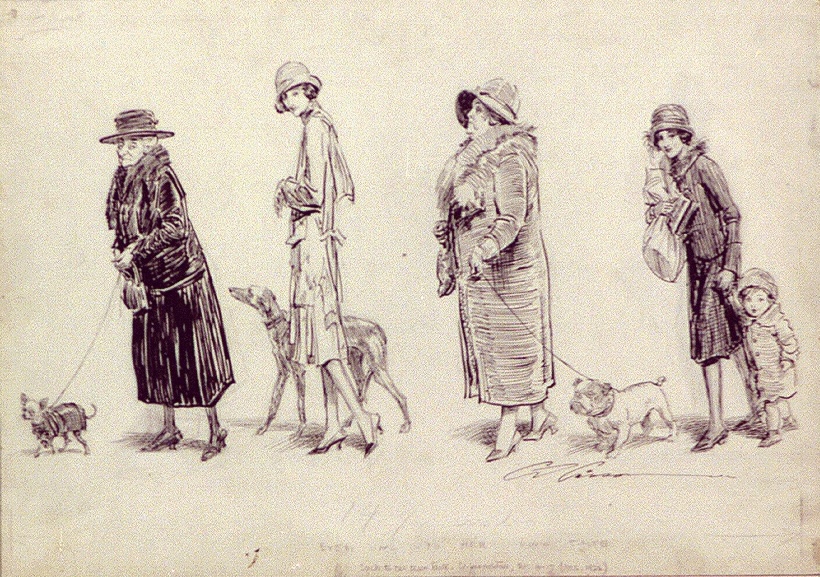This industry perspective is by Kate Watts, CEO of Fifty Thousand Feet.
AI actors. AI musicians. AI creators. When does the encroachment of machines on creativity end? It’s challenging not to wonder what the increasing sophistication of AI means for human beings who wield their creativity professionally. But, nearly a century ago, Coco Chanel showed us what AI can never supplant: the intuitive left turn.
In 1926, Coco Chanel did something no one expected. She introduced a dress so understated, so stark, that it seemed to reject the era’s obsession with embellishment. The color black, until then, had been reserved for mourning. The silhouette was clean, unadorned, and startlingly modern. Vogue compared it to the Ford Model T, not because it was mechanized, but because it was democratic, accessible, and repeatable.
And yet, no machine could have created it.
Chanel wasn’t reacting to market research. She didn’t A/B-test sleeves or iterate toward minimalism based on popular trends. She observed. She felt. She walked the streets of Paris and watched women move—newly working, newly voting, newly aware of themselves in the world. What she designed wasn’t a product of efficiency; it was a product of intuition. She wasn’t trying to impress. She was trying to express.
What Coco Chanel designed wasn’t a product of efficiency; it was a product of intuition.
“Each to her own taste,” by Charles Dana Gibson, 1867-1944; published in: Cosmopolitan, (Dec. 1926), from the Cabinet of American illustration (Library of Congress).
That’s what artists do. They create for themselves, and in doing so, often reveal what others didn’t know they needed.
Today, we live in a world flooded with generative content. Campaigns that once took weeks can now be assembled in minutes. Copy, imagery, and even entire brand identities can be mocked up, tested, and deployed with the help of AI. It’s impressive. But the more we optimize for speed, the more we risk erasing what gives creativity its power—its soul.
Efficiency lifts the floor, but it flattens the landscape.
Efficiency lifts the floor, but it flattens the landscape. Competence is now a commodity. What stands out isn’t what’s fastest to market, but what feels like it could only have come from a human.
There’s something else uniquely human about great creatives: they make mistakes.
Not the kind of errors that get scrubbed out by spellcheck or flagged by version control, but the fruitful kind—missteps that lead to breakthroughs. These are detours that AI would likely correct or prune. And yet, they often lead to some of the most memorable innovations.
Take the Post-it Note. In the 1970s, a scientist at 3M set out to develop a super-strong adhesive. What he accidentally created was the opposite: a low-tack, reusable glue. By most measures, a failure. But another colleague saw possibility in that failure—a bookmark that wouldn’t slip, a note that could move around. Post-it Notes went on to become one of the most successful office products in history.
No algorithm would have arrived at that conclusion. It wouldn’t have pursued the weak adhesive. It wouldn’t have tested for serendipity.
AI is excellent at making sense of what already works. But it has no instinct for what doesn’t yet exist. AI doesn’t walk the streets. It doesn’t notice mood shifts or cultural undercurrents. And it certainly doesn’t reframe a problem by following a mistake.
AI doesn’t walk the streets. It doesn’t notice mood shifts or cultural undercurrents. And it certainly doesn’t reframe a problem by following a mistake.
Which brings us back to Chanel.
The Little Black Dress wasn’t a consensus product. It was a creative decision rooted in observation, belief, and timing. Chanel saw something others didn’t because she wasn’t trying to satisfy an existing preference. She was trying to say something. As it turned out, millions of women recognized themselves in that statement.
To be sure, great branding needs to meet a customer need. Businesses are not built on whimsy. Brands do need to understand customer preferences. But they also need to leave room for intuition. You need people on your team who have the souls of artists.
Steve Jobs understood this balance better than most. He once said, “A lot of times, people don’t know what they want until you show it to them.” That wasn’t a dismissal of consumer insight. It was a caution against letting current tastes and sensibilities lead you around the nose, which is a danger of letting AI lead instead of creative thinking. Jobs encouraged his teams to think like artists—to create with feeling, not just logic. He saw engineers as craftspeople, not functionaries. He infused the design process with values like elegance, empathy, and intuition. That mindset helped Apple invent not just new products, but entirely new categories.
Jobs believed that how something looked and felt could change how people interacted with it—and how they felt about themselves. That belief led to devices people love.
So, what does this mean for marketers and brand leaders now?
It means that amid the growing adoption of AI and the real efficiencies it brings, we need to create space for human judgment. For whimsy. For mistakes. We must protect the parts of the process that feel inefficient but often lead to something surprising. And we need to teach our teams not just how to prompt an AI tool, but how to listen, how to notice, and how to trust their instincts.
Successful brands don’t produce the most products and content. They express something unmistakably their own, like Chanel did. In an age in which the algorithm reigns, that might be the most radical act of all.
Kate Watts is a 3x agency + consultancy founder. She is the CEO of independent brand consultancy, Fifty Thousand Feet.
Header image: Getty Images for Unsplash+
The post The Dress that Outsmarted the Algorithm appeared first on PRINT Magazine.

